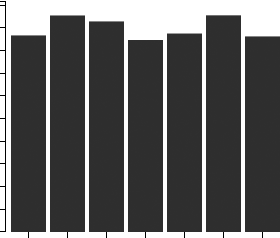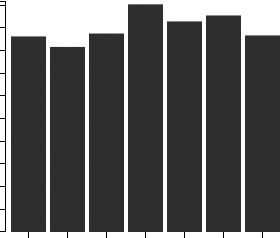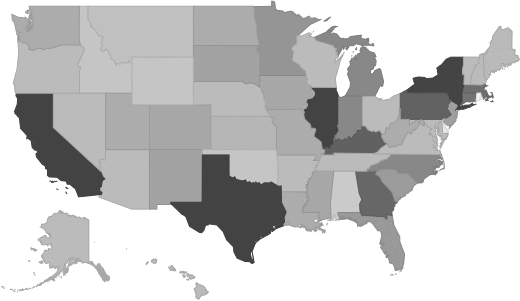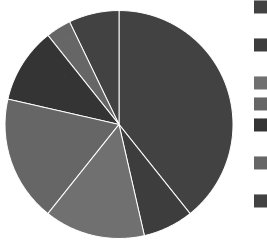Powder Metallurgy Part Manufacturing Industry - Market Research Report
Industry Overview
This U.S. industry comprises establishments primarily engaged in manufacturing powder metallurgy products using any of the various powder metallurgy processing techniques, such as pressing and sintering or metal injection molding. Establishments in this industry generally make a wide range of parts on a job or order basis.
Source: U.S. Census BureauMarket Size and Industry Forecast
This research report analyzes the market size and trends in the Powder Metallurgy Part Manufacturing industry. It shows overall market size from 2020 to the present, and predicts industry growth through 2030. Revenues data include both public and private companies.
| Historical | Forecasted |
|---|
| 2020 | 2021 | 2022 | 2023 | 2024 | 2025 | 2026 | 2027 | 2028 | 2029 | 2030 |
|---|
| Market Size (Total Revenue) | Included in Report |
| % Growth Rate |
| Number of Companies |
| Total Employees |
| Average Revenue per Company |
| Average Employees per Company |
Source: U.S. government financial dataIndustry Revenue ($ Billions)

Industry Forecast ($ Billions)

Advanced econometric models forecast five years of industry growth based on short- and long-term trend analysis. Market size includes revenue generated from all products and services sold within the industry.
Geographic Breakdown by U.S. State
Market size by state reveals local opportunity through the number of companies located in the region. Each state's growth rate is affected by regional economic conditions. Data by state can be used to pinpoint profitable and nonprofitable locations for Powder Metallurgy Part Manufacturing companies in the United States.
Powder Metallurgy Part Manufacturing Revenue by State

Distribution by Company Size
| Company Size | All Industries | Powder Metallurgy Part Manufacturing |
|---|
| Small Business (< 5 Employees) | Included |
| Small Business (5 - 20) |
| Midsized Business (20 - 100) |
| Large Business (100 - 500) |
| Enterprise (> 500) |
Powder Metallurgy Part Manufacturing Industry Income Statement (Average Financial Metrics)
Financial statement analysis determines averages for the following industry forces:
- Cost of goods sold
- Compensation of officers
- Salaries and wages
- Employee benefit programs
- Rent paid
- Advertising and marketing budgets
The report includes a traditional income statement from an "average" company (both public and private companies are included).
| Industry Average | Percent of Sales |
|---|
| Total Revenue | Included |
| Operating Revenue |
| Cost of Goods Sold (COGS) |
| Gross Profit |
| Operating Expenses |
| Operating Income |
| Non-Operating Income |
| Earnings Before Interest and Taxes (EBIT) |
| Interest Expense |
| Earnings Before Taxes |
| Income Tax |
| Net Profit |
Average Income Statement

Cost of Goods Sold
Salaries, Wages, and Benefits
Rent
Advertising
Depreciation and Amortization
Officer Compensation
Net Income
Financial Ratio Analysis
Financial ratios allow a company's performance to be compared against that of its peers.
| Financial Ratio | Industry Average |
|---|
| Profitability Ratios | Included |
| Profit Margin |
| ROE |
| ROA |
| Liquidity Ratios |
| Current Ratio |
| Quick Ratio |
| Activity Ratios |
| Average Collection Period |
| Asset Turnover Ratio |
| Receivables Turnover Ratio |
| Inventory Conversion Ratio |
Products and Services Mix
Product lines and services in the Powder Metallurgy Part Manufacturing industry accounting for the largest revenue sources.
| Product Description | Description | Revenue
($ Millions) |
|---|
Powder metallurgy part manufacturing | Included |
Powder metallurgy parts |
Copper and copper-base alloy |
Iron and steel powder metallurgy parts |
Tungsten metal & tungsten-base alloy powder metallurgy parts |
All other powder metallurgy materials, excl. bearings & gears |
Metal injection molding (MIM) powder metallurgy parts |
Powder metallurgy parts, nsk, total |
Powder metallurgy parts, nsk, for nonadministrative-records |
Powder metallurgy parts, nsk, for administrative-records |
Salary information for employees working in the Powder Metallurgy Part Manufacturing industry.
| Title | Percent of Workforce | Bottom Quartile | Average (Median) Salary | Upper Quartile |
|---|
| Management Occupations | 5% | Included |
| Chief Executives | 0% |
| General and Operations Managers | 2% |
| Office and Administrative Support Occupations | 10% |
| Production Occupations | 61% |
| Assemblers and Fabricators | 10% |
| Miscellaneous Assemblers and Fabricators | 7% |
| Assemblers and Fabricators, All Other, Including Team Assemblers | 7% |
| Metal Workers and Plastic Workers | 37% |
| Machine Tool Cutting Setters, Operators, and Tenders, Metal and Plastic | 8% |
| Machinists | 9% |
| Machinists | 9% |
| Welding, Soldering, and Brazing Workers | 8% |
| Welders, Cutters, Solderers, and Brazers | 7% |
| Other Production Occupations | 10% |
| Transportation and Material Moving Occupations | 5% |
Government Contracts
The federal government spent an annual total of
$1,169,074 on the powder metallurgy part manufacturing industry. It has awarded 61 contracts to 20 companies, with an average value of $58,454 per company.
Top Companies in Powder Metallurgy Part Manufacturing and Adjacent Industries
| Company | Address | Revenue
($ Millions) |
|---|
Included |



